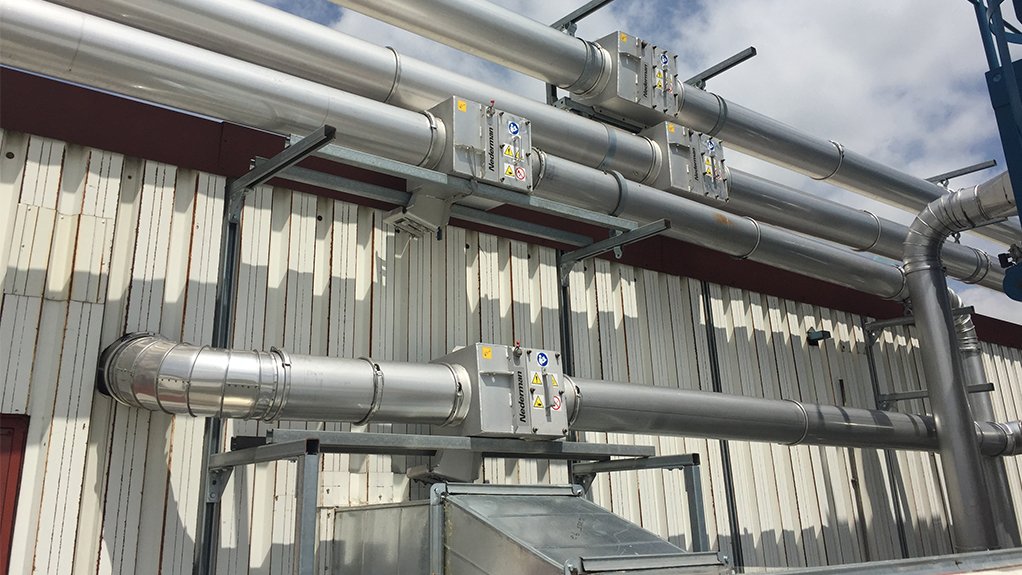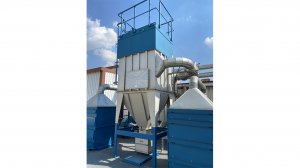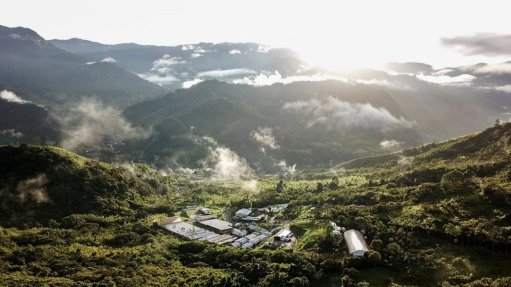ATEX-approved products provide safe solutions



VENT Dust collectors must be fitted with an explosion vent to release the pressure and flames, should a dust explosion occur
Photo by Envirox
DEADLY HAZARD Although practically invisible to the human eye, combustible dust particles are a “deadly” hazard in many workplaces and industries
Photo by Envirox
To prevent the danger of combustible dust and gas explosions, and to create a safer environment, Nederman products sole distributor Envirox uses atmosphere explosible- (ATEX-) approved Nederman solutions to reduce the dangers associated with combustible dust.
Combustible dust, also known as explosive dust, is a by-product created during manufacturing processes that involve combustible raw materials.
The fine material can catch fire and explode when coming into contact with air and an ignition source such as a static spark, electrical spark or flame.
Examples of combustible dust are wood, textiles, plastics, coal, carbon, chemicals, pharmaceuticals, rubber, aluminium, magnesium, titanium, flour, sugar, grain, tobacco and spices.
Although practically invisible to the human eye, combustible dust particles are a “deadly” hazard in many workplaces and industries, says Envirox MD Schalk Hoon.
Certain conditions can cause the dust to become explosive, potentially killing or injuring workers, and destroying machinery or facilities.
Explosive, or potentially explosive, atmospheres can also be created when flammable gases or fumes, derived from chemicals or petroleum products, are present.
Hoon explains that Envirox has Nederman-certified equipment, extraction arms to extract dust at source, dust collectors and industrial vacuum cleaners with explosion vents, and explosion isolation flap valves – which ensures that the systems Envirox offers are safe and comply with the ATEX directive.
Combustible Dust Extraction Process
When combustible dust is generated during a manufacturing process, Envirox uses NEX D/DX flexible extraction arms to get as close as possible to the source where the dust is created and then extract it.
Hoon says the extraction arms are easily manoeuvrable, and have a double-earthed system and antistatic-earthed ventilation hose that prevents static electricity and sparks.
“The extraction arms are connected to a ducting system that will convey the dust to the dust collector.”
The ducting system that conveys the dust to the dust collector also needs to be earthed to prevent static electricity and sparks that can possibly be generated.
Inside the dust collector are anti-static filter cartridges that facilitate the air-cleaning process, during which all the dust particles will be removed from the air stream and dumped into a bin for disposal.
The concentration of airborne dust inside the dust collector is very high, hence it is also where the highest risk of a dust explosion is, notes Hoon.
The dust collectors must be fitted with an explosion vent to release the pressure and flames, should a dust explosion occur. The unit must also be constructed to withstand the pressure buildup during a dust explosion.
“If a company does not used the correct, certified ATEX dust collector to extract combustible dust, it can result in serious damage to equipment and buildings, and can even result in loss of life,” he adds.
Another way of ensuring safety during the extraction process is using an explosion isolation valve that is installed in the duct line before the dust collector. If a dust explosion occurs inside the dust collector, flames can travel through the ducting and ignite the building, causing major risks to not only equipment and resources, but to people.
Further, in many manufacturing factories with steel roof beams, there are dust buildups, which occur over numerous years of production. The shock of a dust explosion in the dust collector will cause the dust buildup to fall off of the steel roof beam and be dispersed into the air.
Hoon explains that this causes a high concentration of airborne dust particle that can ignite with the flame coming from the dust collector. This flame is prevented from coming inside the factory by the isolation flap valve.
Therefore, the explosion isolation valve is vital, as it will close from the back pressure of a dust explosion inside the dust collector and prevent the flames from entering a building.
Envirox is the sole importer and distributor of Nederman products for South Africa and supplies Southern, West, Central and East Africa, with many filtration installations in South Africa, Ghana, Kenya, Namibia, Botswana, Eswatini and Zimbabwe.
All food manufacturing and packaging facilities require dust filtration systems that comply with the ATEX directive for combustible dust, and Envirox has supplied solutions to many well-known international food and beverage factories in Africa, as well as to the metal, coal and charcoal industries, Hoon concludes.
Article Enquiry
Email Article
Save Article
Feedback
To advertise email advertising@creamermedia.co.za or click here
Announcements
What's On
Subscribe to improve your user experience...
Option 1 (equivalent of R125 a month):
Receive a weekly copy of Creamer Media's Engineering News & Mining Weekly magazine
(print copy for those in South Africa and e-magazine for those outside of South Africa)
Receive daily email newsletters
Access to full search results
Access archive of magazine back copies
Access to Projects in Progress
Access to ONE Research Report of your choice in PDF format
Option 2 (equivalent of R375 a month):
All benefits from Option 1
PLUS
Access to Creamer Media's Research Channel Africa for ALL Research Reports, in PDF format, on various industrial and mining sectors
including Electricity; Water; Energy Transition; Hydrogen; Roads, Rail and Ports; Coal; Gold; Platinum; Battery Metals; etc.
Already a subscriber?
Forgotten your password?
Receive weekly copy of Creamer Media's Engineering News & Mining Weekly magazine (print copy for those in South Africa and e-magazine for those outside of South Africa)
➕
Recieve daily email newsletters
➕
Access to full search results
➕
Access archive of magazine back copies
➕
Access to Projects in Progress
➕
Access to ONE Research Report of your choice in PDF format
RESEARCH CHANNEL AFRICA
R4500 (equivalent of R375 a month)
SUBSCRIBEAll benefits from Option 1
➕
Access to Creamer Media's Research Channel Africa for ALL Research Reports on various industrial and mining sectors, in PDF format, including on:
Electricity
➕
Water
➕
Energy Transition
➕
Hydrogen
➕
Roads, Rail and Ports
➕
Coal
➕
Gold
➕
Platinum
➕
Battery Metals
➕
etc.
Receive all benefits from Option 1 or Option 2 delivered to numerous people at your company
➕
Multiple User names and Passwords for simultaneous log-ins
➕
Intranet integration access to all in your organisation



















